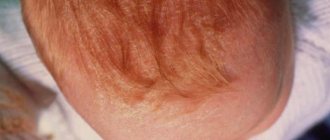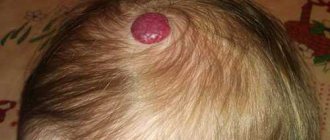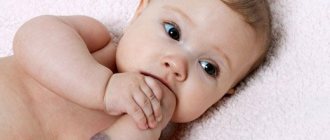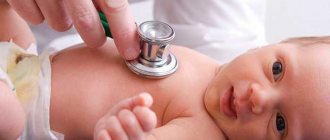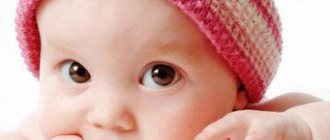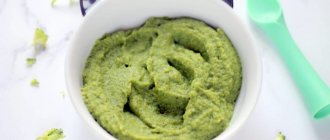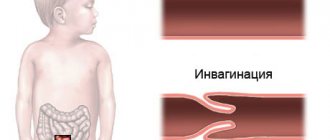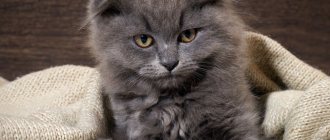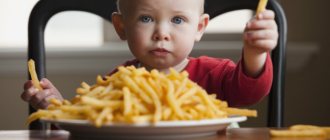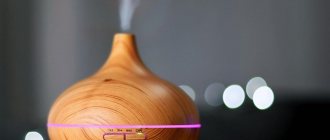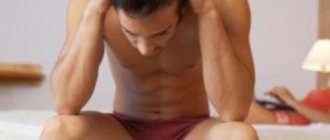Is it necessary to remove scabs on a baby's eyebrows?
The arrival of a baby in a family is always a festive event. But the first months of happiness are overshadowed by the appearance of yellow scales. Young mothers begin to worry and try to remove the growths manually. To know for sure whether it is necessary to mechanically remove crusts on the eyebrows of a baby, it is recommended to consult a doctor and identify the causes of their occurrence.
Characteristics of crusts
The skin of a newborn, not adapted to new conditions, intensively secretes fatty substances in the first days of life. Due to improper functioning of the sebaceous glands, small crusts form. They are characterized by the following features:
- They tend to be located both on the head - in the hairline, as well as on the forehead, eyebrows and in tender places behind the ears;
- They have small volumes;
- Easily separated from the skin;
- There is no burning or itching;
- Yellowish or pale brown.
When exposed to external factors, such as the contact of pathogenic microorganisms on their surface, they become denser and begin to grow throughout the baby’s body. This makes the crusts difficult to get rid of. In most cases, the child does not suffer from growths. The only thing that causes inconvenience is not the aesthetic appearance.
Remember!
If the volume of scales is not significant, then it is not recommended to touch or remove them yourself. But when they begin to grow and grow together, treatment is applied.
Lack of therapy leads to a lack of oxygen supply to the upper layers of the epidermis. An inflammatory process develops, threatening to develop from physiological dermatitis into a serious disease.
Additional symptoms
If dry yellow crusts on the eyebrows of a baby begin to increase in volume and spread to the forehead, you should pay attention to other symptoms. If signs are detected, you should urgently consult with your attending physician:
- Scales began to appear on the skin where there is no hair;
- There is itching;
- The baby began to gain a lot of weight;
- Rashes begin to appear throughout the body;
- In the area where the crust has formed, redness is detected, and heat is felt when touched;
- In places where there are growths, peeling and wounds with purulent content occur.
It is worth consulting with a pediatrician if you have tried to remove the crusts for a long period of time, but there was no result. It is necessary to find out what further actions should be taken to eliminate the scales.
Possible causes of the problem
Before starting treatment, it is necessary to accurately determine the factors influencing the appearance of seborrhea on the eyebrows of an infant. The reasons for the appearance of crusts are the following situations:
- Adaptation - at birth, a specific lubricant is present on the baby, which helps the child pass through the birth canal. Immediately after birth, it is washed off, exposing the unprotected upper layer of the epidermis. As a defensive reaction, and also due to the unregulated functioning of the sebaceous glands, crusts appear on the eyebrows of infants. This reason is indicated by the absence of an inflammatory process, swelling and swelling in the affected area.
- Insufficient air humidity in the apartment - for a normal stay of the child, maintain 50-70% humidity in the room. Then the baby’s skin will be completely clean, without unnecessary rashes. Low humidity also causes problems with sleep and appetite.
- Improper care of the skin of a newborn - lack of water procedures, as well as frequent bathing of the child equally negatively affect the skin of the baby. Bathing with a weak solution of potassium permanganate dries out the baby's delicate dermis excessively. It is recommended to use the product once a week as a disinfectant, while on other days it is better to use infusions of medicinal herbs. It is imperative to monitor the reaction of the baby’s skin to bathing. In some cases, crusting may indicate that the shampoo is not suitable for the baby.
- Exposure to external factors - sometimes the baby’s skin reacts with the appearance of milky crusts on the baby’s eyebrows to such irritants as: synthetic clothing, the first walk in the cold air, or a reaction to the sun’s rays. Also, scales may appear due to complementary foods introduced for the first time.
In addition, dense crusts appear in infants if the mother takes various medications. Seborrhea symptoms also occur in the form of an allergic reaction. Therefore, in order to begin to treat the baby for identified scales, it is necessary to determine the reason why they appeared.
Necessary actions on the part of parents
There is no need to use specific medications. If crusts occur, pediatricians advise following the recommendations:
- Use baby creams and oils - they are spread on areas where scale growths are present, as well as for general moisturizing. These products should be applied before a walk, before going to bed, and after swimming in the evening.
- Do not use specific baby cosmetics, replacing them with vegetable oils, which can be used on delicate baby skin already on the third day after birth. But first the product is boiled in a water bath.
- Protect from exposure to sunlight - especially in summer, do not allow the baby to be exposed to large amounts of ultraviolet rays. Some parents use barrier creams. But they are applied only when absolutely necessary and washed off immediately.
- Give more fluids - in the hot summer after vomiting or with loose stools, moisture quickly leaves the body. Therefore, it is recommended to replenish losses by constantly saturating the internal organs with nutritious moisture.
- Treating the baby's eyebrows before bathing - approximately 60 minutes before water procedures, you need to lubricate the affected areas on the face with Vaseline or oil. During the water procedure, you need to apply shampoo and massage them lightly to remove soggy crusts.
- After bathing, be sure to dry your skin well with a soft towel. The remaining droplets help draw moisture out of the liquid, which again leads to dehydration.
It is strictly forbidden to remove scales mechanically by scraping. Such a process will only lead to discomfort for the baby, inflammation and scar formation on the skin.
Thus, crusts form on the eyebrows of a baby only when exposed to negative factors. It is necessary to adhere to general recommendations so as not to provoke the appearance of dry scales. If they have formed, then treatment begins at the moment when they increase in volume and begin to cause discomfort to the child.
Loading…
Source: https://detskiezabolevaniya.com/korochki-na-brovyah-u-grudnichka.html
Crusts on a baby's eyebrows: reasons for how to remove them
Many new parents notice that a strange formation in the form of a crust has appeared on the baby’s hairs and eyebrows. Moms and dads begin to panic and strive to get an appointment with a pediatric specialist as soon as possible.
Should we panic? What are the reasons for the appearance of a crust on a baby’s hair and what are the consequences of such a phenomenon? New parents must have clear answers to all these questions in order to be able to help the baby and not harm the baby’s not yet fully strengthened body.
What are the crusts on the eyebrows of a baby and on the head?
Parents need to understand that a baby's skin is very delicate and sensitive and requires special care. The baby's skin secretes a large amount of fatty substances. As a result, a layer of crust forms on the surface of the baby’s head, eyebrows and even ears.
Over time, microbes and other foreign particles from outside enter the area of the formed crust. This leads to compaction of the surface of the formation. This greatly complicates the process of dealing with crusts on the hair of an infant.
The situation can be aggravated by the presence of thick hairs on the baby’s head.
To understand the reasons for the appearance of crusts on the baby’s hair and eyebrows, you must first pay attention to the age of the baby at which the formations began to appear.
If peculiar scales appear a short period of time after delivery, the reason may be hidden in changes in the hormonal levels of the new mother, which arose during the period of bearing the child.
Hormones could enter the baby’s body during intrauterine development, causing increased work of the sebaceous glands.
To completely get rid of the scales, it will take from one to three weeks, during which the newborn’s body will gradually get rid of the infiltrated hormones.
The appearance of formations on the baby’s hair in later life (at 2-3 months) may be associated with the occurrence of an allergic reaction.
In this case, the mother of a small child needs to adjust her diet and try to find out which foods could contribute to the appearance of allergies. If the baby is bottle-fed, new parents should think about changing formula milk.
To choose the right food for your baby, you should consult a specialist. He will give the necessary advice and recommendations.
Scales that seem harmless at first glance may turn out to be seborrheic dermatitis, the occurrence of which is facilitated by the appearance of yeast and fungi in the skin.
A yellow crust may indicate an overabundance of baby care products.
The reason for the appearance of such formations may be an insufficient number of hygiene procedures or non-compliance with generally accepted rules during their implementation, or insufficiently good care of the baby.
Unsanitary conditions can also contribute to the appearance of scales on the baby's hair.
In extremely rare cases, the cause of the formation of a crust on a baby’s head, which many parents worry about how to remove, can be skin diseases, oily skin, as well as stress and a weakened immune system. It is very important to correctly determine the cause in order to help the baby without harming his health.
A crust on a baby's head. How to remove?
After finding out the cause of the crust on the baby’s head or eyebrows, you need to begin eliminating it. It is strictly not recommended to clean the surface of the baby’s head and eyebrows from formations using combs or similar objects.
An adult may not calculate the force of impact and cause significant harm to the baby’s skin. In exceptional cases, parents can introduce an infection.
This will only aggravate the situation and prolong the period of struggle with the crusts that have appeared on the eyebrows of the baby.
Pediatricians recommend following a simple and understandable scheme for every parent.
- Half an hour before bathing, apply Vaseline or burdock oil to scalp-covered hair.
- During water procedures, you need to apply a small amount of shampoo or other baby bathing product appropriate for the baby’s age to the surface with damaged skin. This step is necessary to get rid of any remaining burdock oil or Vaseline.
- Then you need to remove the scales from the surface of the head and eyebrows with light circular movements. To do this, you need to use a special children's hair brush.
- After completing hygiene procedures, you need to apply an antiseptic cream to the affected area.
- To completely remove scales from the surface of the baby’s head, it is necessary to repeat the procedure until the formations are completely eliminated.
It is imperative to deal with crusts on the head of a small child, since they significantly slow down hair growth.
Necessary examinations
If, after the procedure described above, the crusts on the eyebrows and hair have not disappeared, and the affected area has expanded, you must immediately consult a doctor for qualified assistance and additional research that will help establish the etiology of the tumors. These include:
- stool analysis for dysbacteriosis;
- bacterial sowing;
- Analysis of urine;
- blood analysis;
- ultrasound examination of the abdominal cavity and thyroid gland.
Preventive measures
To prevent the appearance of peculiar scales on the baby’s hair, you need to follow a few simple conditions. The air in the room should never be dry. For humidification, you can use special devices.
In addition, the baby's skin requires special care after completing bath procedures. Special lotions and even everyone’s favorite baby cream will do. Mothers need to follow a diet and exclude allergenic foods from the diet. Baby clothes should be made from pure and high-quality cotton.
Symptoms that should alert you
Parents need to be aware of symptoms, the presence of which should alert them and cause them to immediately consult a doctor at a children's clinic. These include:
- itching where crusts and scales appear;
- the appearance of rashes in places where there is no hair;
- the presence of an inflammatory process in places where scales form;
- the presence of purulent wounds;
- unsuccessful fight against rashes over a long period of time, etc.
If one or more of the above symptoms appear, you should contact your pediatrician for additional tests and examinations.
Consequences
By themselves, yellow crusts on a baby’s eyebrows do not pose a serious danger. The presence of such formations can only significantly slow down the hair growth of a small child.
Conclusion
Seborrheic crusts on the eyebrows of infants, as well as on the surface of the hair, are quite common. The cause of their occurrence may be improper care, violation of hygiene rules, as well as the entry of mother’s hormones into the child’s body during intrauterine development. Peeling on the eyebrows of a baby does not bother the baby and does not have harmful consequences.
Source: https://FB.ru/article/412624/korochki-na-brovyah-u-grudnichka-prichinyi-kak-ubrat
How to properly wash a child’s hair if there are crusts
Hair shampoo should not be used daily. It is enough to wash your baby's hair once a week. In other cases, you can simply water your hair.
An exception should be made in cases where a child from six to seven months begins to visit a pool in which chlorine compounds are used for disinfection. In this case, washing your hair with shampoo is necessary. At the same time, you can now choose the option of a pool with ozone purification.
No special shampoos are required for treatment in this situation - it is better not to interfere with the natural process. Moreover, if you clean your head regularly, a crust will form on your baby's scalp again and again until the baby outgrows this condition.
Crusts and peeling on the eyebrows of a newborn baby: causes of appearance
In the first months of an infant's life, parents face many problems. The baby's skin is very delicate, it is extremely susceptible to various changes in the external environment or cosmetics, which can lead to the appearance of crusts on the eyebrows of the baby, or seborrheic dermatitis.
Peeling eyebrows in infants
Sebaceous and sweat glands of the baby
The epidermis (outer layer of skin) in a newborn is thin (0.15-0.25 mm) and loose, which can cause rapid skin irritation and peeling.
The sweat glands are just beginning to function; they are poorly developed, because the exit from the channels is closed by epithelial cells. The glands are fully formed by 3-4 months. Therefore, when a child overheats, he does not sweat, and the skin may begin to peel, as its top layer peels off easily.
The sebaceous glands function intensively under the influence of maternal hormones circulating in the baby's body. Over time, they become clogged and the sebum dries out, forming a thick, scaly crust on the skin.
Alarming symptoms
Crusts on a baby’s head - how to remove them
Important! When yellow crusts form on the eyebrows and head of a baby, most often they do not cause itching and do not cause concern to the baby.
If they are present for a long time and tend to grow, they interfere with proper breathing of the skin, disrupt the functioning of the glands, can facilitate the penetration of bacterial and fungal infections and cause increased hair loss.
Symptoms become alarming when:
- despite the struggle with crusts, they constantly form again;
- crusts appear in large numbers outside the scalp and hairline, for example in the groin, buttocks, armpits or neck;
- the crust is extremely dense and hard;
- the baby is worried and scratches where crusts appear;
- the skin becomes red and rashes appear on it;
- the child's hair is falling out;
- Liquid appears in the area of the crusts, the skin in these places becomes warmer to the touch than its other areas.
These signs may be evidence of allergies, atopic dermatitis, psoriasis, or fungal infections, which must be treated with specific agents.
Allergy on the forehead in a baby
Causes of crusts
Crust is a skin change in an infant that appears as thick white or yellow scales that resemble dandruff. Most often they are observed on the face: eyebrows, forehead and scalp. Other places are behind the ear, in the nasolabial folds, on the eyelids, in the groin, where the sebaceous glands function most intensively.
Peeling skin on a baby's head - what to do
Although this phenomenon is quite common (in 76% of all babies), it does not occur in all newborns. For the first time, crusts appear in a month-old baby or a little earlier, but this can also happen in one-year-old children. There are many factors that determine why a baby's eyebrows turn red and peel.
Important! It has been noted that crusts most often form in those infants who suffer from hypersensitive skin, as well as those who are born in late spring and summer, that is, in the hot season, and are exposed to high temperatures.
Other reasons are:
- Genetic predisposition, but this factor has not been sufficiently studied;
- If a newborn's eyebrows are peeling, this may be caused by the use of potassium permanganate for bathing, which has a drying effect, or by frequent use of soaps and shampoos;
Bathing a baby with soap
- The indoor air is too dry;
- Excessive production of sebum by the sebaceous glands;
- Using inappropriate children's cosmetics.
Parents' actions
How to suck snot out of a baby - how to remove it from the nose
It is better to remove crusts immediately after they appear, since at first they can be barely noticeable, and then quickly grow and form a dense crust, which is much more difficult to remove. Although many experts do not see the need to do this and advise just waiting until the problem goes away on its own (but this does not always happen).
Important! It is strictly forbidden to mechanically peel off crusts from dry skin, as this can not only injure the baby’s delicate skin, but also cause an infection.
What should parents do when their newborn’s forehead and eyebrows peel:
- First you need to soften the crusts with regular baby oil, or even simple olive or coconut oil. You need to note how much time remains before swimming - it should be at least an hour. Lubricate all places where scales appear. If they are on the scalp, then after applying the oil, put on a cap;
- Remove scales using a blunt-toothed comb or brush. You can use a soft toothbrush to remove crusts behind the ear and on the eyebrows. It is best to do this after lathering your hair with shampoo, but it can also be done before washing;
Removing crusts
- Thoroughly rinse off the shampoo with the scales removed.
Important! After one procedure, all scales will not be removed; it may need to be repeated.
Preventing peeling
If a baby's eyebrows peel and crusts form, it is not enough to simply remove them, as they can form again. To prevent peeling, it is necessary to take preventive measures:
- Monitor the humidity in the room where the child is. It must be at least 70%;
Air humidification for babies
- It is important not to overheat the child and not to put a hat on him when it is not necessary. In infants, thermoregulation mechanisms are not fully developed, and the body reacts to any overheating by overly active sebaceous glands;
- Nursing mothers need to exclude fatty foods and foods that provoke allergic reactions from their diet;
- Even if there are no visible crusts and no noticeable peeling, it is necessary to regularly care for your child's skin, lubricating it with baby oil and cream after bathing. You can also sprinkle baby powder, which absorbs sebum well and softens the skin.
Important! If the appearance of scales and peeling is associated with the use of children's cosmetics, you need to lubricate problem areas with natural olive or almond oil and stop using cosmetics.
Although seborrheic dermatitis is not a dangerous condition or the result of improper care, it should be remembered that failure to prevent and treat it can lead to serious problems. Bacteria and fungus love to settle on thick crusts. They can cause fungal infections and weaken hair roots.
Source: https://kpoxa.info/zdorovie-pitanie/korochki-na-brovyax-grudnichka.html
Skull deformation in your baby: when to suspect something is wrong?
Your baby was born - so cute and special, you want to constantly look at him, studying every touching fold, line, and hair. While admiring, the mother may notice that her baby’s skull is slightly deformed and the head has an irregular shape. What is this? Don’t be alarmed; it would be surprising if things were just the opposite.
Nature knows best
A child is born with fairly soft and mobile bones of the skull. This is necessary so that he can easily overcome the birth canal, which, say, is not very spacious. The bones remain as such even in the first months of infancy. This is also understandable - the brain needs somewhere to grow.
Also, the skull may become slightly deformed in an infant in the first weeks of life. This is due to the fact that the baby’s postures are not varied - he lies either on his back or on his side. In order to avoid such curvatures, experts recommend constantly changing your body position. If the baby has chosen the most comfortable side for sleeping, you need to periodically carefully turn the head in the other direction. You can also buy a special pillow that takes the shape of your head, but this is only permissible after the recommendation of a specialist.
If the baby's skull has already undergone some deformation, massage can help. It consists of light circular stroking of the small head. Any use of force in this case is unacceptable - you need to act carefully and affectionately.
What deformations of the skull indicate disorders in an infant?
But do not be alarmed - the above phenomena do not occur very often and, as a rule, occur during a difficult pregnancy and complicated childbirth. Most often, unevenness in a baby’s head has natural causes and goes away on its own as soon as the time comes.
Source
Head deformation in a child
Girls, hello everyone, Has anyone encountered this problem and have you fixed the head? The youngest, Stepik, 4 months old, has not turned his head to the left almost since birth, it will take a long time to start massaging, but since the child is large, the right side of his head has become flat, and the left is protruding, and the doctor said that if this continues, then the front right will begin to protrude. I don’t want a child with a crooked head.
Our friends’ son always kept his head only on the right side and did not turn it under any pretext. No toys helped, they tried everything. And when he was four months old, he slowly began to turn his head, and now he is a year old and everything is fine.
The baby's eyebrows are red
Atopic dermatitis is a fairly common disease among infants. Very often, this disease becomes the first serious problem that the baby and his parents face.
Despite the apparent simplicity and safety of the disease, the consequences of improper treatment or lack thereof can be more than serious - from persistent skin rashes to allergic rhinitis, bronchial asthma and other allergic diseases.
That is why it is so important to figure out in time how to treat atopic dermatitis for a child and avoid complications.
